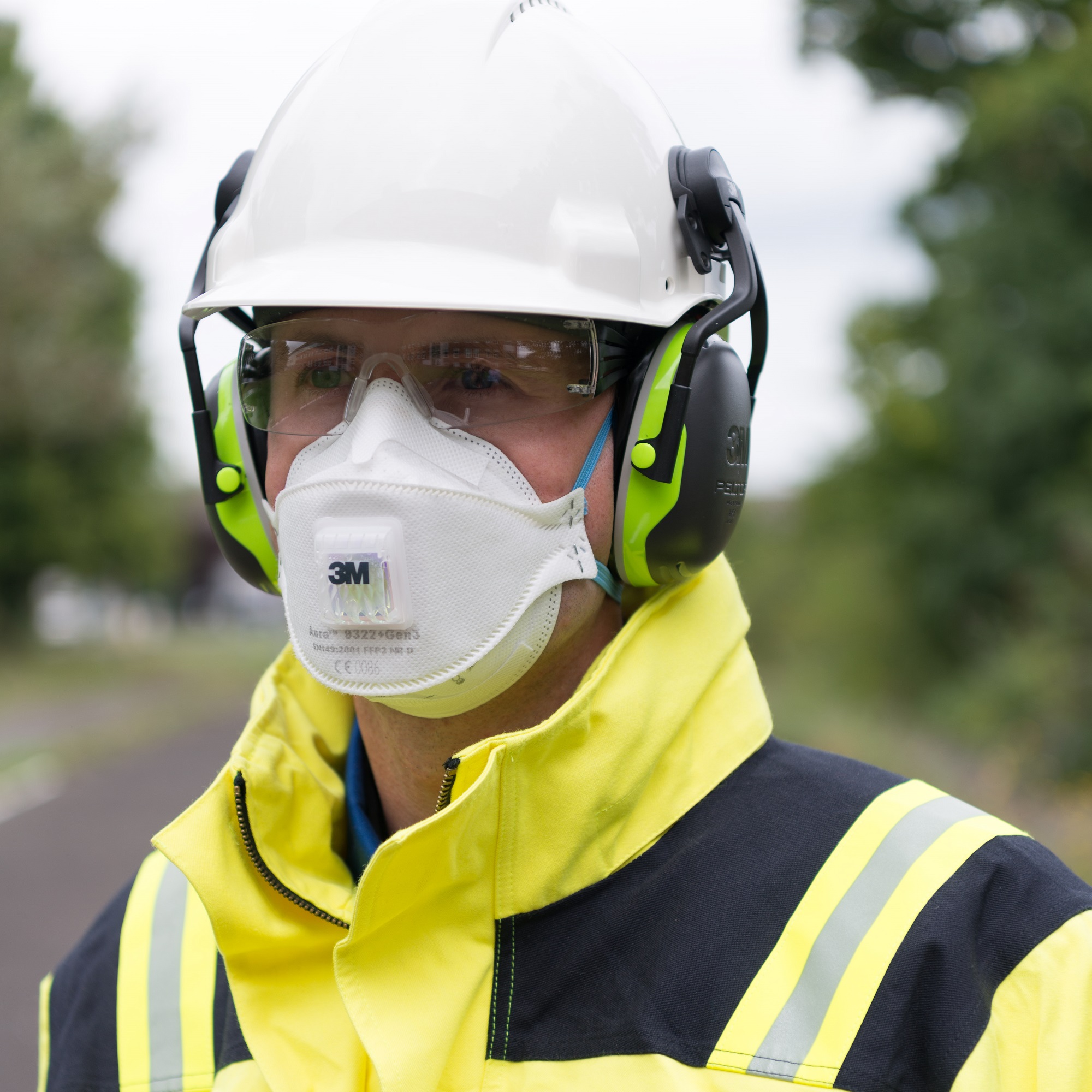 Loading... Please wait...
Loading... Please wait...Categories
Our Newsletter
- Home
- When is a mask not a protective mask?
When is a mask not a protective mask?
Posted on 19th May 2020 @ 2:43 PM
The Differences between FFP Respirators and Surgical Masks
Since certain disposable filtering face piece particulate respirators are similar in appearance to many surgical (also known as medical) masks, their differences are not always well understood. However, respirators and surgical masks are very different in intended use, fit against the face, wear time, testing and approval. Even some surgical masks that appear similar to respirators may have not been designed to help protect the wearer from airborne hazards; therefore, they should not be considered an equivalent substitute to government-approved respirators.
In Europe, the testing for each is as follows:
EN 149:2001+A1:2009 (filtering facepieces) approved to the Personal Protective Equipment (PPE) Regulations
EN 14683:2019 (surgical mask) standards approved to the Medical Device Directive1,2,3,4
Surgical Masks

The primary purpose of a surgical mask is to help prevent biological particles from being expelled by the wearer into the immediate environment. Surgical masks are also typically designed to be fluid resistant to splash and splatter of blood and other infectious materials and not necessarily for filtration efficiency. Surgical masks are not necessarily designed to seal tightly to the face, and therefore the potential of air leakage around the edges exists. This type of mask is designed to limit the expulsion of fluids, droplets and particles when breathing, speaking, coughing or sneezing. It DOES NOT offer any respiratory protection to the wearer for incoming fluids, droplets or particles.
3 TYPES:
Type I surgical face masks are used to help reduce the risk of the spread of infections via the droplet route (either worn by patients and healthcare workers) - they do not have resistance to fluids.
Type II surgical face masks are principally intended for use by healthcare professionals in an operating room or other medical settings with similar requirements, but do not have resistance to fluids.
Types IIR surgical masks are principally intended for use by healthcare professionals in an operating room or other medical settings with similar requirements. They have resistance to fluids and droplets (as tested to EN14683:2019) and will have a Declaration of Conformity to the Medical Devices Directive (MDD) 93/42/EEC and a supporting test report.
FFP Respirators

Disposable filtering facepiece particulate (FFP) respirators are designed to help reduce the wearer’s exposure to airborne particles. They are designed to offer high levels of particle filtration and to seal tightly to the wearer’s face therefore reducing the potential of air leaking into the wearer’s breathing zone from around the edges of the respirator. Respirators are available offering different levels of filtration efficiency and face seal leakage.
3 TYPES:
FFP1 masks are low filtration efficiency - minimum 80% filtration
FFP2 masks are medium filtration efficiency - minimum 94% filtration
FFP3 masks are high filtration efficiency - minimum 99% filtration
Exhale valves provide comfort during wear and help to prevent moisture build up within the facepiece.
Summary of Key Differences
| Disposable FFP Respirators | Surgical Masks |
| Designed to help protect the wearer from exposure to airborne particles | Designed to help protect the sterile environment from wearer generated particles |
| Designed to seal tightly to the wearer's face | Not necessarily designed to seal tightly to the face, and so air leakage around the edges is likely |
| Different classes offer different levels of protection | Some types offer fluid resistance to liquid splash |
| Some respirators are certified as both respirators and surgical masks | Surgical masks are not Personal Protective Equipment as defined in the PPE Regulations |
| Require face fit testing and wearer to be clean shaven | |
| Respirators are Personal Protective Equipment (PPE) |
What you Need to Know
Surgical masks are intended to help put a barrier between the wearer and the work environment or sterile field. They may help keep spit and mucous generated by the wearer from reaching a patient or medical equipment. They can also be used as a fluid barrier to help keep blood splatter from reaching the wearer’s mouth and nose.
However, surgical masks cannot provide certified respiratory protection unless they are also designed, tested, and government-certified as a respirator. If a wearer wants to reduce inhalation of airborne particles, they need to obtain and properly use a government-certified respirator, such as a FFP2 or FFP3 filtering facepiece particulate respirator.
- Always wash your hands before donning your mask, and avoid touching it while in use
- When surgical masks become wet it is recommended that they are replaced immediately and disposed of in a hygenic way
- All masks are only effcient in use when worn correctly, undamaged and kept clean
- Surgical masks and disposable FFP masks are non-reusable
- FFP Respirators only create a face seal when the wearer is clean shaven
- FFP masks much be Face Fit tested by certified personnel to be sure they are worn/fit correctly, and with each use must be fit checked by the wearer
Disposing of your Used Masks
Remove your mask from the straps not the facepiece, discard of the mask in a closed bin, and do not handle someone else’s mask. It is advised to no re-use single use (NR) masks. Make sure to ALWAYS wash your hands after removing and disposing of the mask.
The video here *, explains a bit about how we and others test "face-fit" - a legally bound, occupational requirement for wearing and using protective face-masks, or respirators .
Watching through to the end will help understanding why the UK HSE suggests that viral transmission is over fifteen times greater than when using an approved mask.
At close quarters, an FFP3 mask, for instance, will measurably offer around between twenty and fifty times more protection than a, so called, "surgical" mask.
When considering small SARS2-19 viral particles, for instance, one must acknowledge that although viable, viral particulate will range between about 80 and 130 nanometres (a Nanometre is a thousand millionth of a Metre) - too small to filter - these particles need transport to establish a new host cell.
Thus, they will usually need a water vapour particle for transport. Typically, the diameter of such water particles or droplets will be between 1000 and 1000000 Nanometres in diameter, and it is therefore this range of sizes against which a mask should protect, to be effective.
An N95 mask (recently a popular subject) is nomenclature simply referring to the mask having been tested to remove nineteen twentieths of incident particulate under certain conditions. The range of particulate size tested here is between 0,5 and > 40 Microns (Micron = a millionth of a Meter).
Respirable particulate is commonly defined as the particles able to penetrate the smallest bronchioles and alveolar sacs - roughly 0,5 to ten Microns. Biological particulate, of course, does not play by the same rules of pathology as do biologically inert bits and pieces of similar size and that makes the science of keeping safe against viruses imprecise, compared to that of predicting disease caused by occupational dusts.
In summary, for facemasks to be most effective in helping disease spread, an approved mask, tested to remove the aerosol described, offers many time the reduction in disease transmission.
The HSE has published much work to this effect and the reader will be interested to note the paper referred here and upon which results some of my remarks have been made. https://www.hse.gov.uk/research/rrpdf/rr619.pdf
Thanks for listening:
https://www.youtube.com/watch?v=6NsHfBQw42w *
References: HSE, Protec/Bunzl and othersfor this article summarising key differences.
